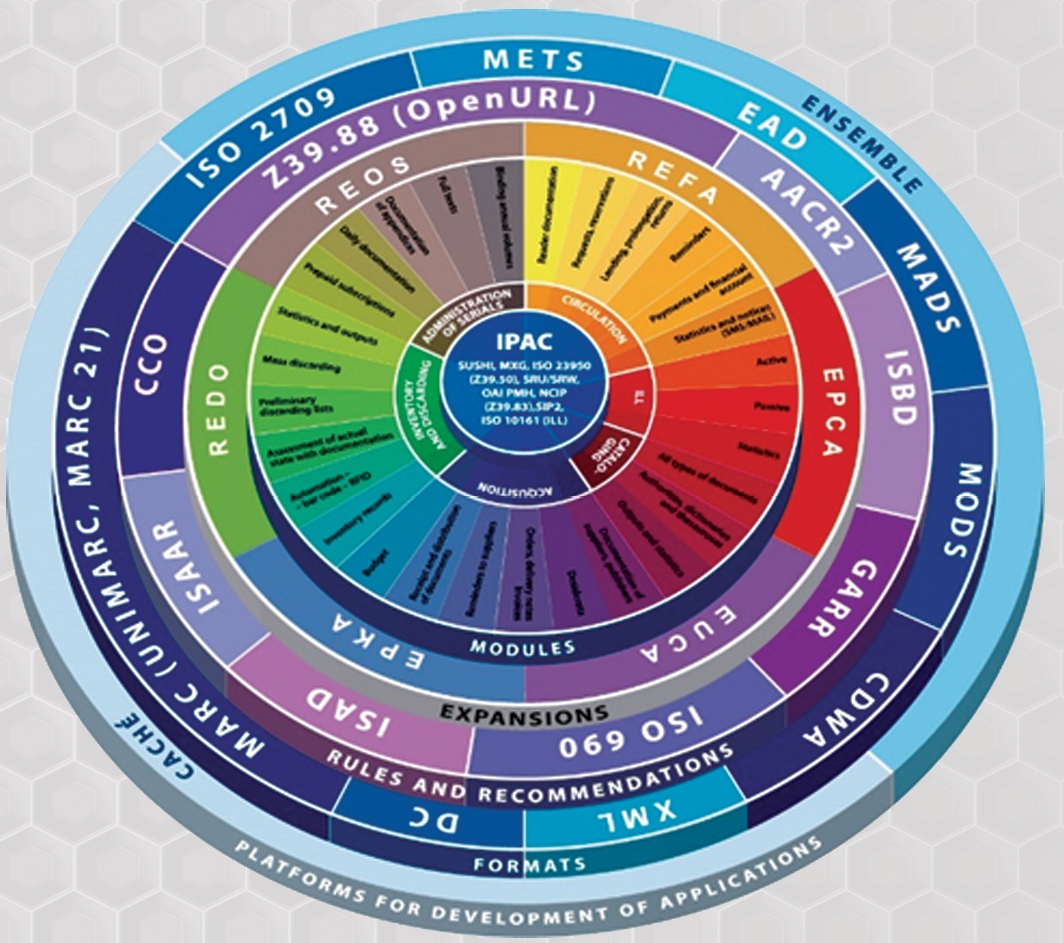Advanced Rapid Library (ARL)
Advanced Rapid Library (ARL) is an information system designed for processing, administration and access to collections, catalogues and various types of information in memory and cultural heritage institutions and regional information centres.
ARL was developed by the company Cosmotron that has over 20 years of experience in development and maintaining of library-management system. Cosmotron has implemented system of quality assurance according to ISO 9001:2009 for analysis, development, implementation and operating of the systems for keeping, administration and access of the collections and catalogues. Our staff is stable and well specialized on area of information systems development and memory institutions — this is our quality of services guarantee. We collaborated with librarians and other experts from memory institutions.
What attributes are typical for ARL?
- Openness
- Multi-layer architecture of the client-server type
- Full graphics interface
- Access by means of any www browser
- Independence on the operation system Windows, Linux
- Work with MARC formats
- Support of cataloguing rules and recommendations
- Full support of authorities and authorities with added value
- Support of building access to compilation
- Display of formats supporting ISBD, AACR2, ISO 690
- Z39.50 server, Z39.50 client in accordance with BATH profile
- Web services
- Full UNICODE support
- Multi-language capacity
Formats
MARC (UNIMARC, MARC 21), DC, XML, CDWA, MODS, MADS, EAD, METS, ISO 2709 .
Protocols
ISO 23950 (Z39.50), SRU/SRW, OAI PMH, NCIP (Z39.83), SIP2, ISO 10161 (ILL)
IPAC (online catalogue)
Searches on the basis of various criteria, display of results of inclusive relations and links, integration of external information resources into one IPAC interface; access to the user account; personalization and electronic services.
IPAC for mobile phones
Its use is very intuitive easy, quick and well-arranged and also available in Google Play and similar sources. IPAC for mobile phones is not only a minimized version of the online catalog, but it is the application with all the elements for the mobile device, and the maximum function of the standard IPAC is kept as well.
Cataloguing and authorities administration
Complex processing of documents and authorities with the possibility of accepting records from external sources.
Circulation (lending)
Monitoring collective and individual users, evidence of various types of lending and transactions, setting differentiating conditions for individual categories of users, creation of requests and reservations, generation of reservation notifications, generation and sending out of reminders.
Serials
A module allowing the procurement (and often supporting cataloguing), receiving and claiming of items that are published regularly (Most times). Convenient daily documentation of journals, creation and documentation of orders for journals, evidence of invoices, sending out reminders to suppliers.
Acquisition
Automation of all activities relating to obtaining documents – building a database of desiderata and suppliers, creation of orders, documentation of invoices and monitoring the delivery of documents, generation of reminders of undelivered documents, receipt of specimens.
Inventory and discarding
Fast revision of the collection and consequent discard of documents.
Interlibrary lending service (ILL)
Active and passive interlibrary lending service – documentation of requests, documentation on state of availability, generation of notice of delivery of a requested document.
Image server
Image server enables to connect pictures and other objects to a bibliographic record automatically; there is no need to interconnect pictures/objects manually to a particular record. It is possible to find a record identifier in the file path of an object.
Reports
Reports are available as a part of every module. Librarians can get basic information and statistics about:
- Collections — new documents added to collection (in date range) summarized by language, acquisition method (as purchase, as gift etc.), document type etc.
- Circulation — statistics of new users, number of checkouts (in date range) etc.
- Online catalog (IPAC) — number of accesses inside library, outside library, the most searched terms, statistics of resources usage etc.

